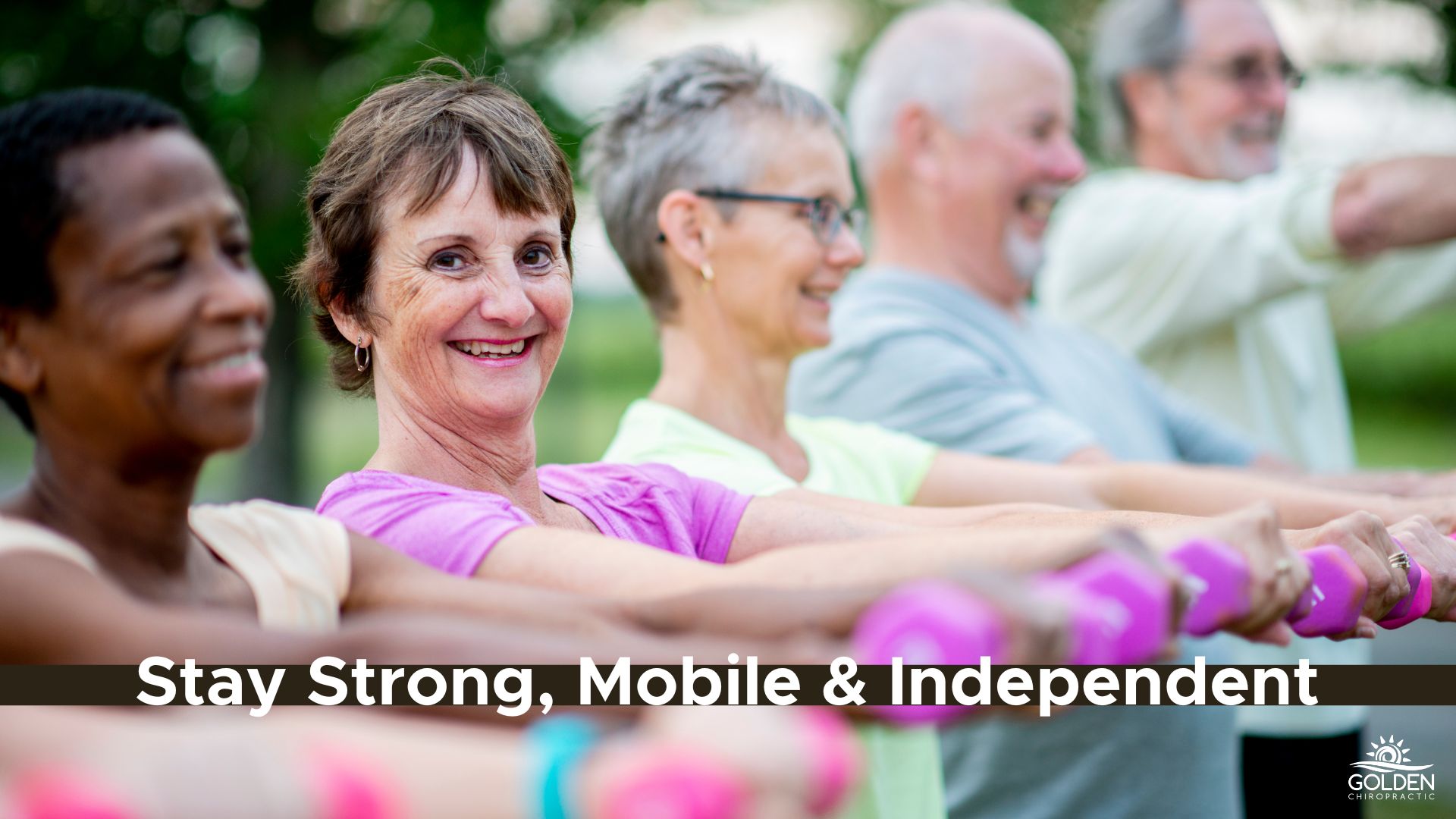
03/14/2025 by Dr. Joe Bell
Aging Doesn't Have to Be a Struggle
It's normal for seniors to face challenges like joint pain, stiffness, and decreased mobility. The aches, pains, and fears that come with these changes can begin to erode your confidence and joy of living.
But aging doesn't have to mean you stop actively enjoying life. With chiropractic care and simple lifestyle changes, you can stay strong, mobile, and independent.
Getting older doesn’t mean you can't enjoy an active, vibrant life.
With the right self-care, you can enjoy an active life, move with ease, and feel great in your body again.
How do chiropractors help older adults keep moving?
When it comes to aging bodies, chiropractic care can really make a huge difference.
We work with older adults to increase mobility and reduce the risk of injury through body work and lifestyle advice.
Which aging-related conditions do chiropractors help with?
We see a lot of older adults come into our office with these issues associated with aging:
Osteoporosis
As you age, your bones tend to weaken, increasing your risk of fractures.
While people don't often notice that their bones are weakening until they break one, there could be signs.
New back pain, a loss of height, or stooping posture could indicate that it's time to work with a professional to help build your bone density.
Increased Fall Risk
Aging can lead to balance issues and muscle weakness, elevating the likelihood of falls.
With more risk of falls, you've got more risk of breaking bones or experiencing other injuries.
We generally advise strength training and balance exercises for staying active as you age.
Cartilage Degeneration
As you age, the cartilage cushioning your joints can wear down, leading to stiffness and discomfort.
This degeneration often develops gradually. Joint pain and reduced flexibility can be the first signs of cartilage degeneration.
Low-impact exercises and chiropractic care can help reduce the impacts of cartilage loss.
Decreased Synovial Fluid
As you age, you produce less synovial fluid. Synovial Fluid is the joint lubricant that minimizes friction.
Without adequate lubrication, your joints can feel stiff and painful.
Staying hydrated and keeping physically active can help your joint health and keep you moving.
Changes in Connective Tissue
Aging can make your ligaments and tendons stiffer and less flexible.
Less flexible tissues limit your range of motion, making daily movements harder over time.
Stretching and mobility exercises help preserve flexibility and reduce stiffness as you age.
Osteoarthritis (Degenerative Joint Disease)
Osteoarthritis happens when the cartilage in your joints breaks down.
The symptoms of osteoarthritis are pain, swelling, and stiffness.
Managing symptoms is key when you've got osteoarthritis. We often advise joint-friendly exercises, weight management, and heat or ice as needed.
DIY & Gardening Related Aches and Pains
Staying physically healthy while enjoying physically active hobbies requires proper body mechanics.
Back pain, joint strain, and muscle soreness can all develop from using improper ergonomics.
We can help you learn good body mechanics and choose ergonomic tools to make a huge difference.
What can you do to stay strong, flexible, and active as you age?
Losing mobility, strength and independence are not necessarily inevitable as you age. While your body is going through changes, there are strategies that will increase your quality of life.
We see many of our senior patients regain strength, mobility and independence by adopting these self-care behaviors:
Get regular chiropractic care.
Seeing a chiropractor regularly can help keep you moving comfortably.
Adjustments can improve how your joints work, ease pain, and help you feel and function better.
Regular chiropractic is especially helpful if you're dealing with something like osteoarthritis.
Practice regular strength and balance training.
Adding some simple exercises to your routine can help you stay steady on your feet.
Building muscle strength and improving your balance can lower your risk of falls.
It also makes it easier to move confidently.
Feed your bones.
Eating the right foods can help keep your bones strong.
Getting enough calcium and vitamin D is especially important for preventing osteoporosis and supporting overall bone health.
Learn proper ergonomics for your activities.
Learn how to move the right way during activities like gardening or building furniture to avoid strain and injury.
Learn about selecting the best tools for supporting your musculoskeletal health.
Using proper techniques and ergonomic tools can help you enjoy your hobbies without pain and injury.
Live a healthy lifestyle.
Staying active, maintaining a healthy weight, and quitting smoking all support healthy joints and healthy bodies.
Developing and maintaining healthy habits can help you feel better and stay active longer.
Minimize your fall risk.
Make sure your home is safe for getting around and you’re not easily tripping over obstacles in your path.
Work with a professional to get a personalized exercise plan (we help with this) to strengthen your particular areas of weakness.
Make it easier to stay steady and confident in your daily life.
Having a hard time moving easily and feeling secure?
We can help! Book online to see our chiropractors in Aptos.
We’ll make a plan to ease your pain, discomfort, and mobility issues.
Learn more about staying active, independent, and strong as you age.
We’ve put together some advice and education around aging strong with chiropractic and smart lifestyle choices. Read to learn more:
Don't Accept Osteoporosis as Inevitable
Aging Strong: Falls and Broken Bones are Often Optional
Active Lifestyles After 40 Require Some Adjustments
Cultivating Balance: Tips for Pain-Free Gardening
It’s a Joint Effort: Chiropractic & Self-Care for Managing Osteoarthritis
